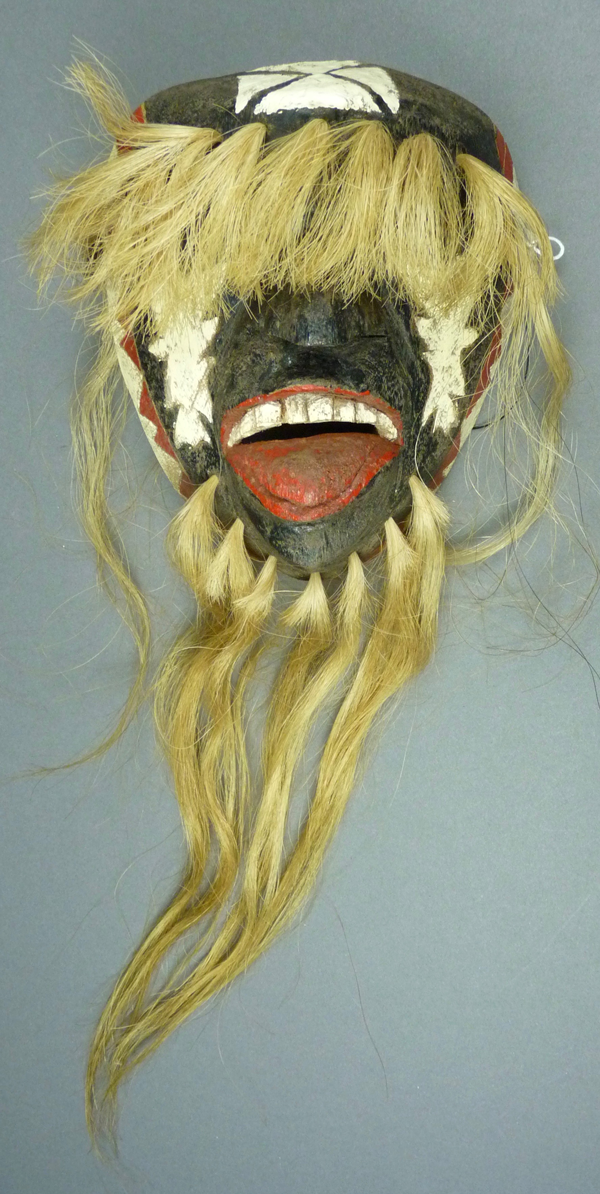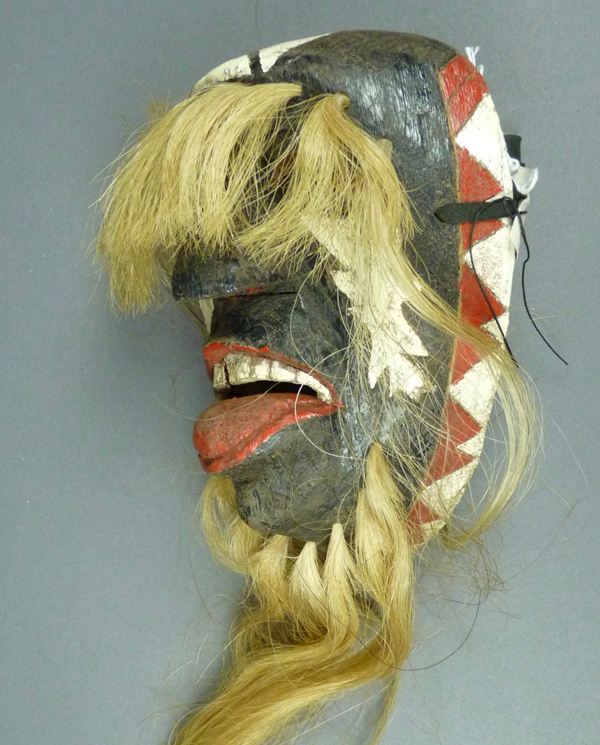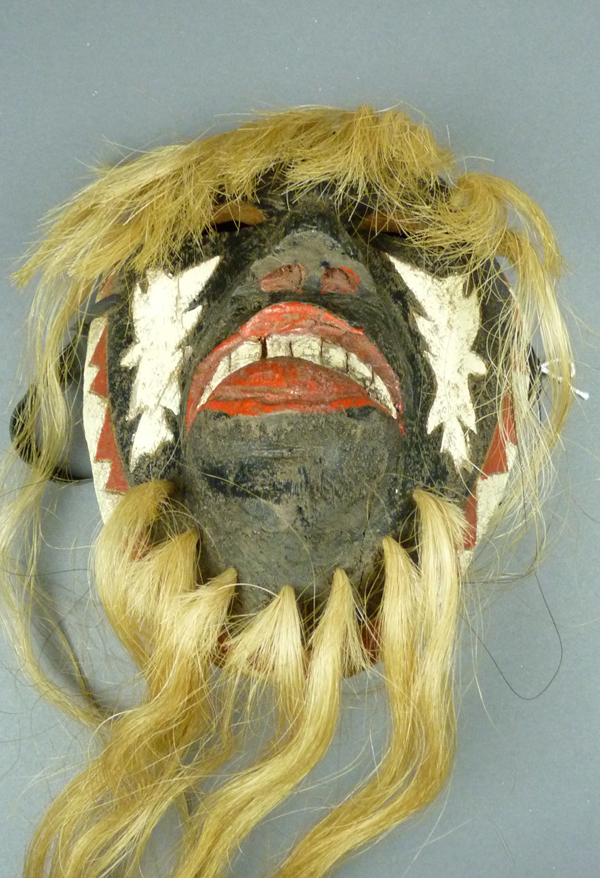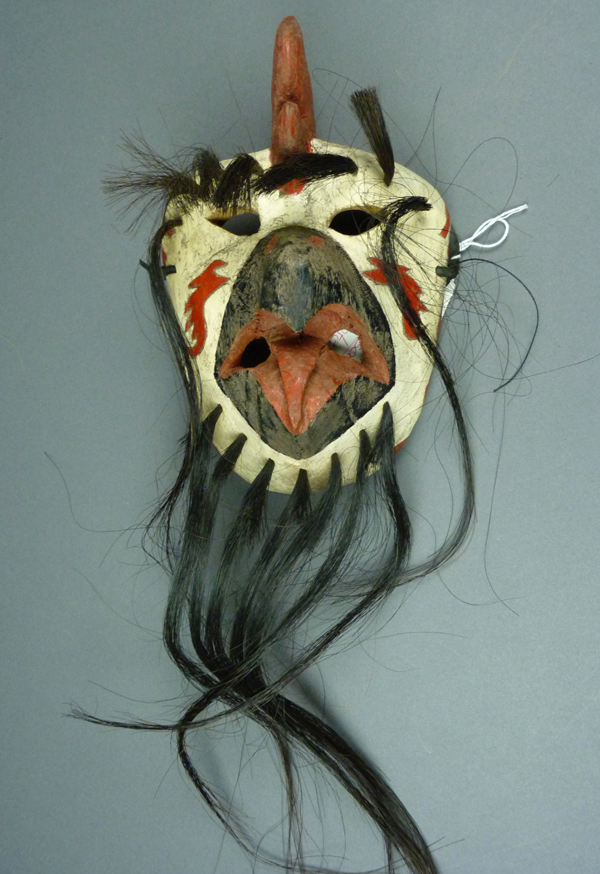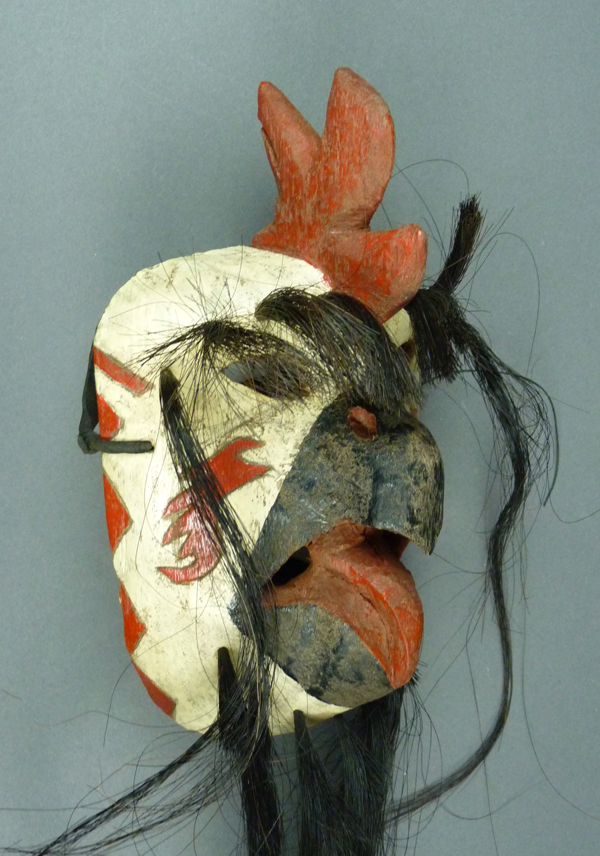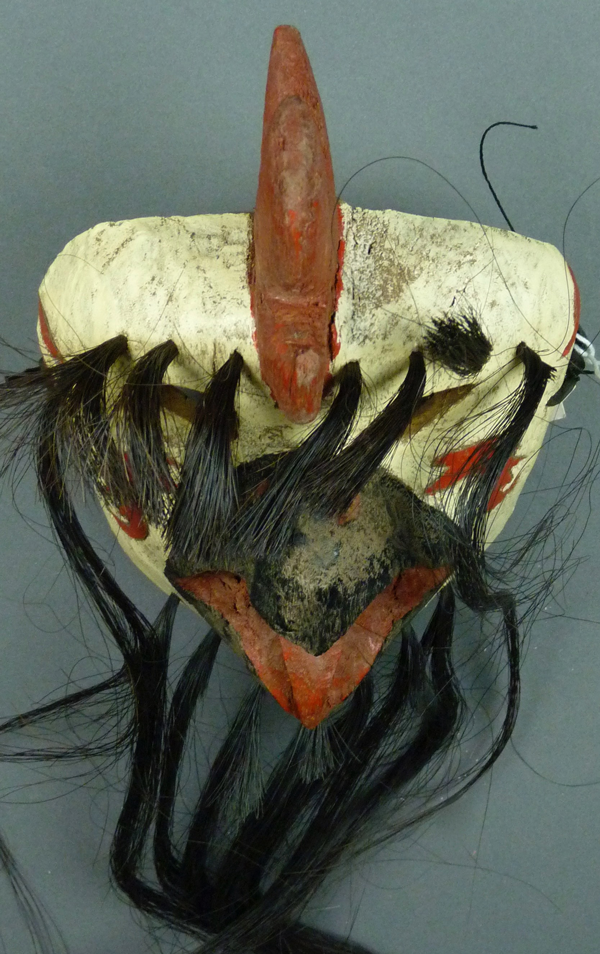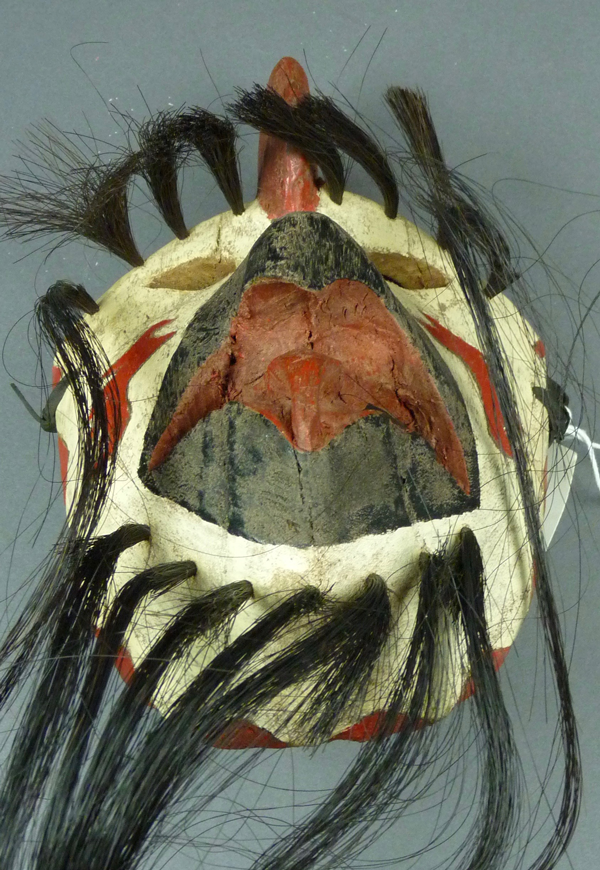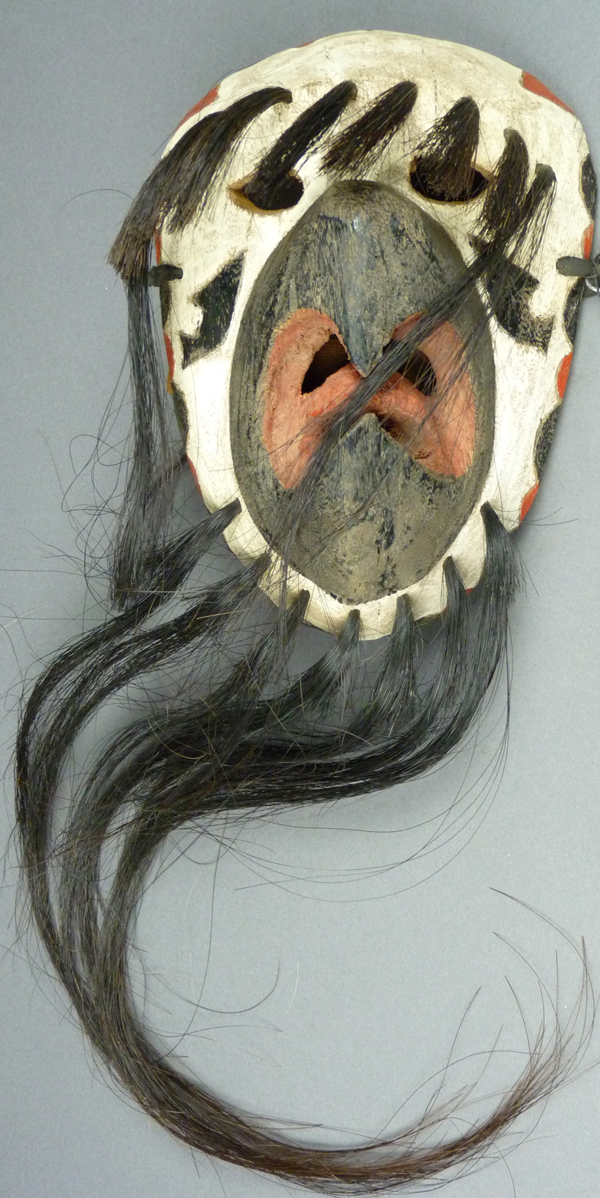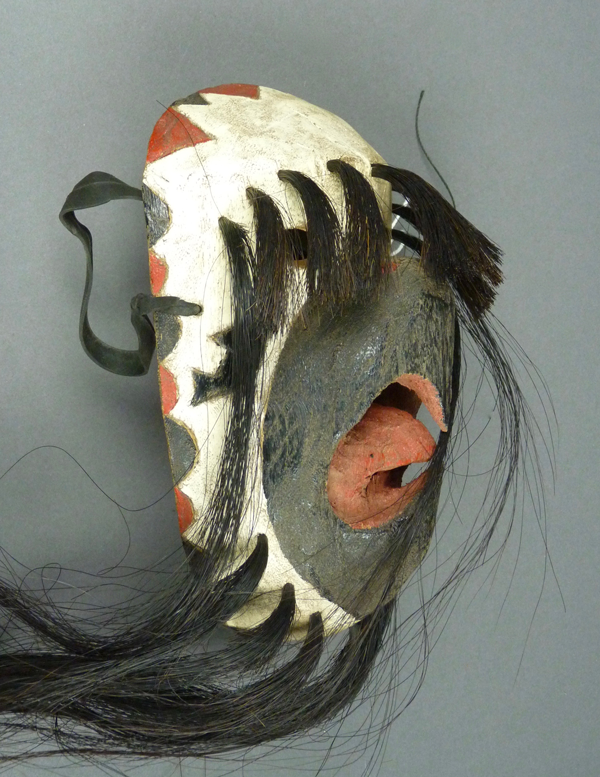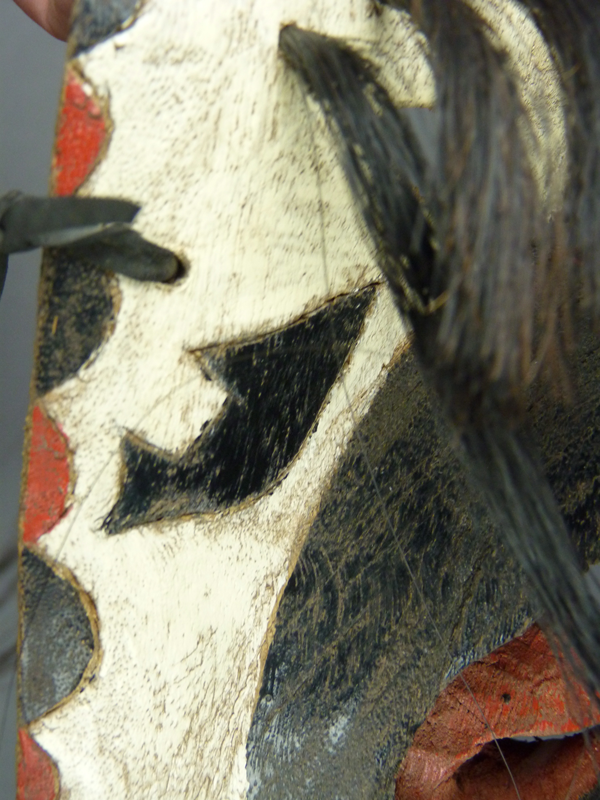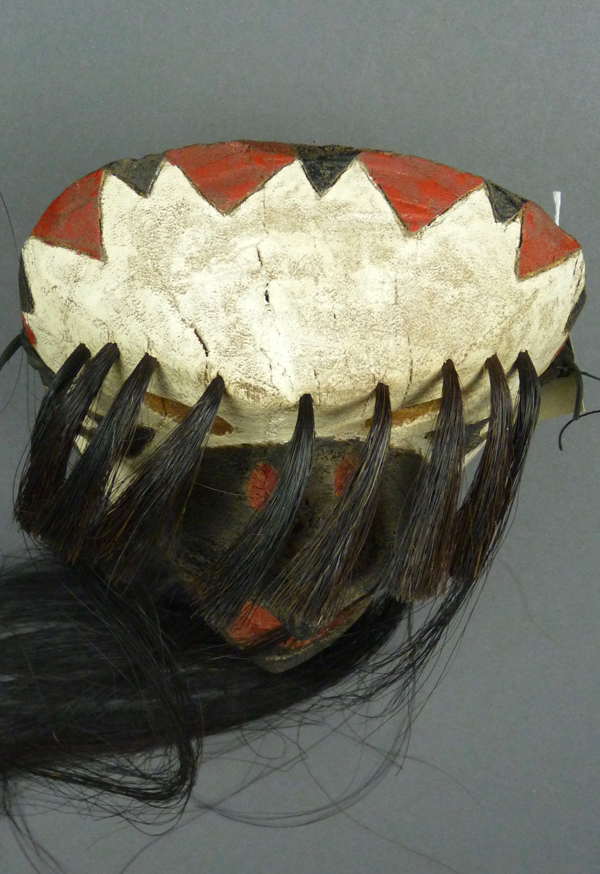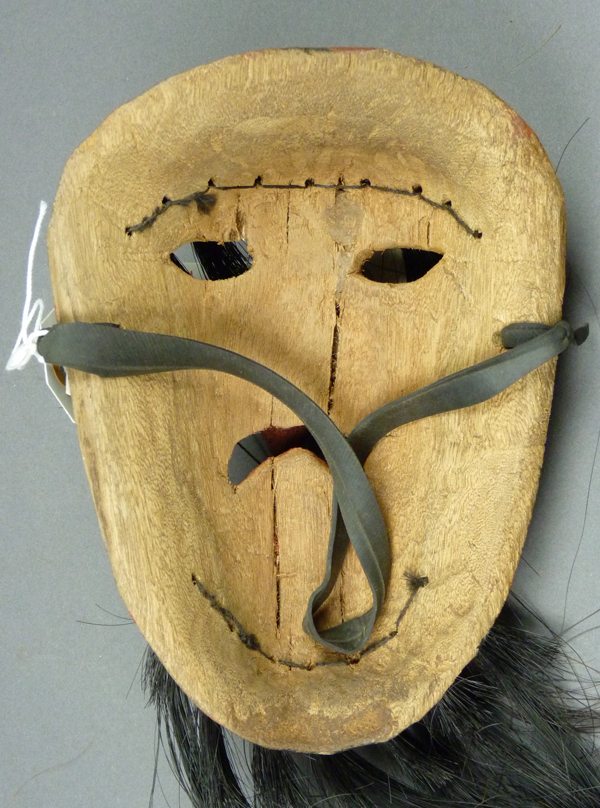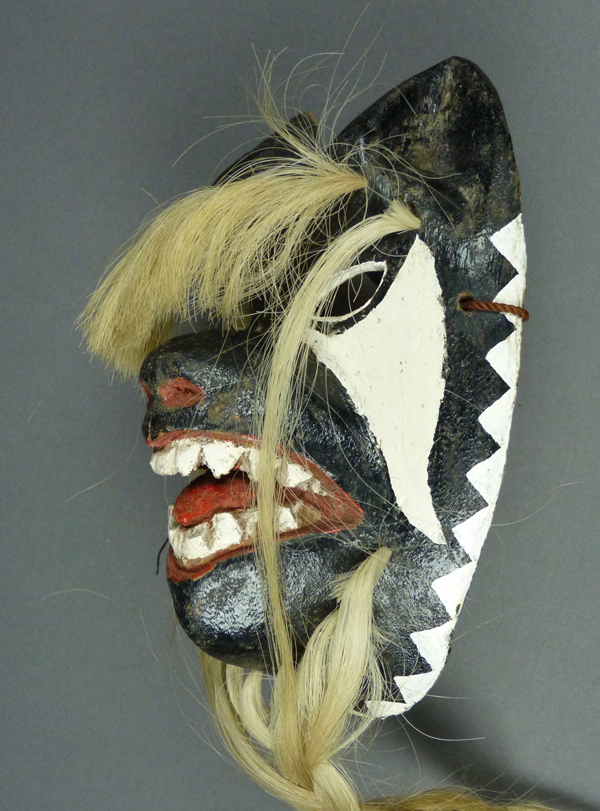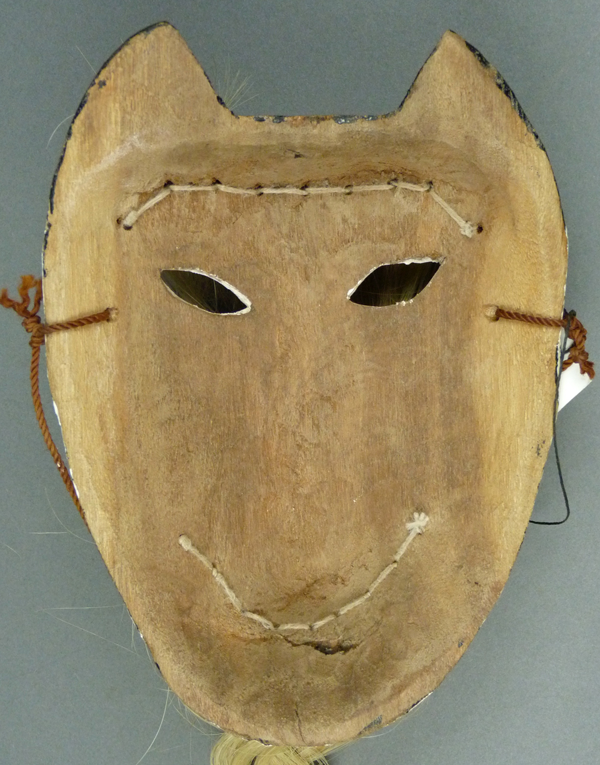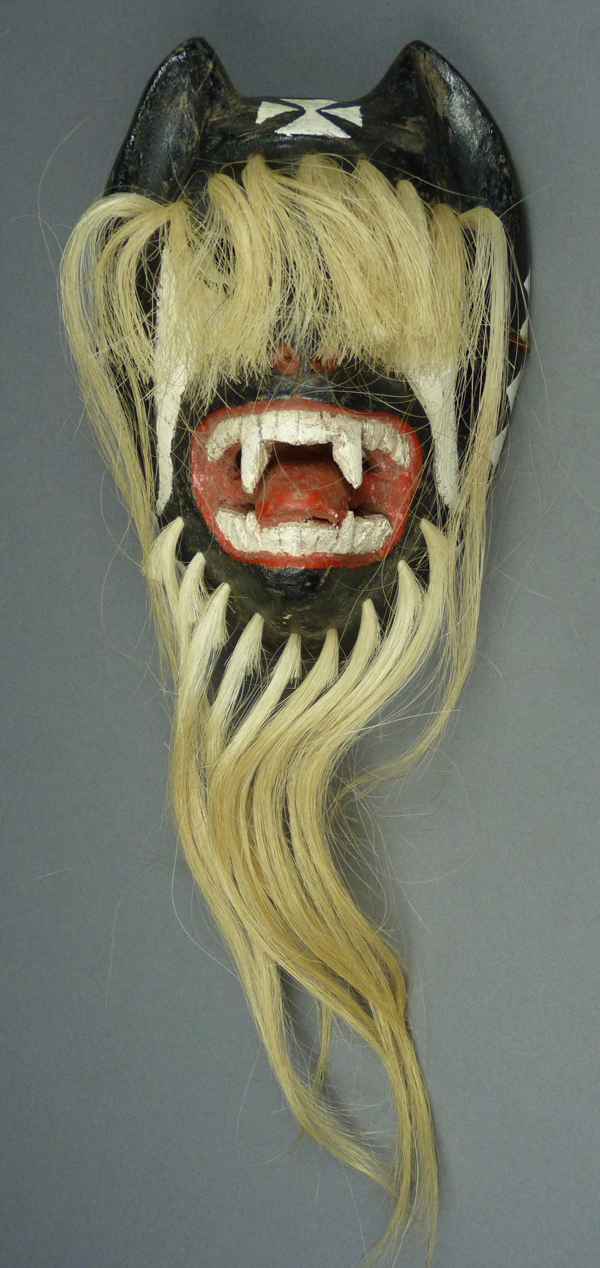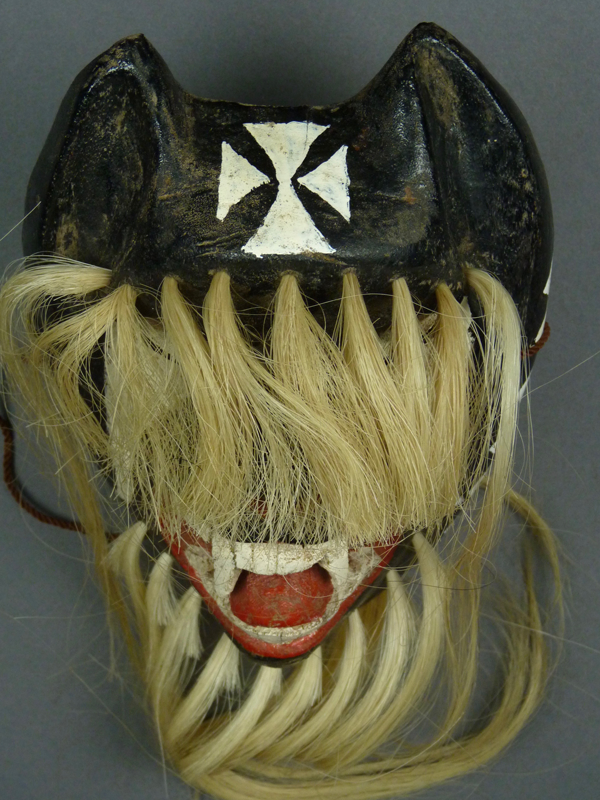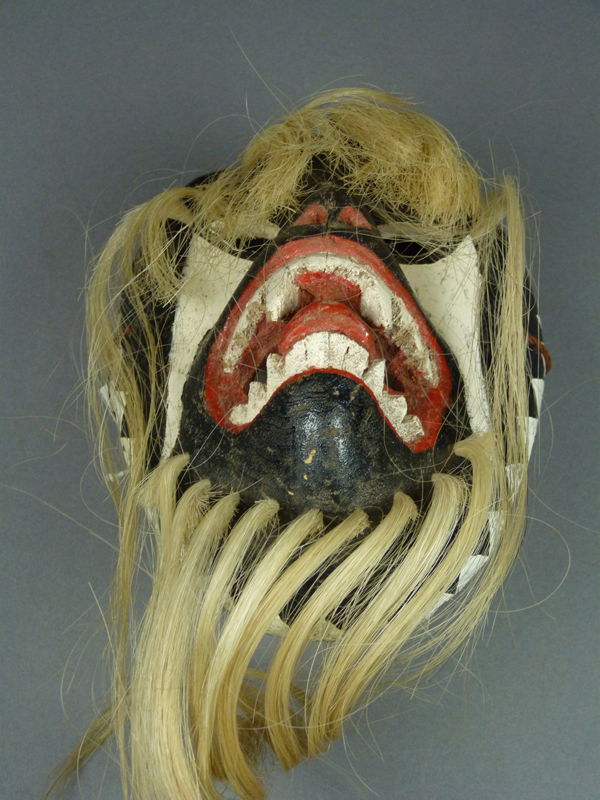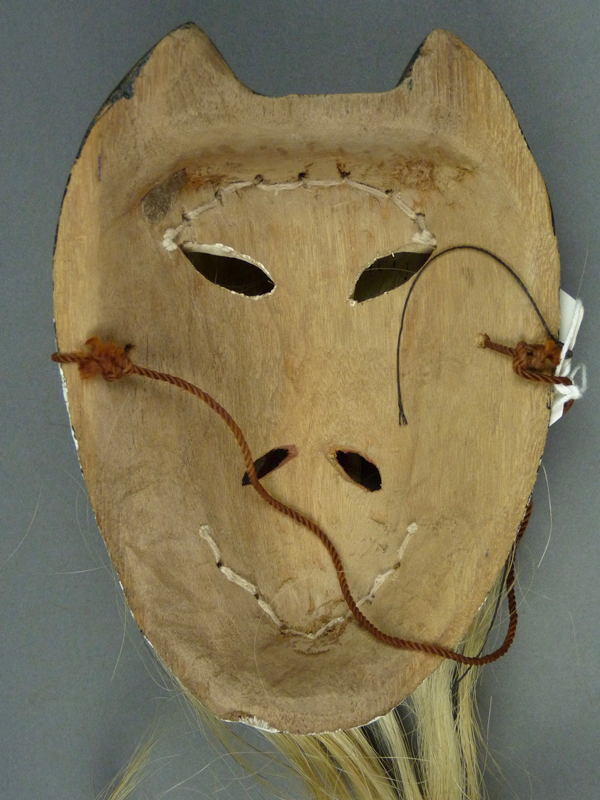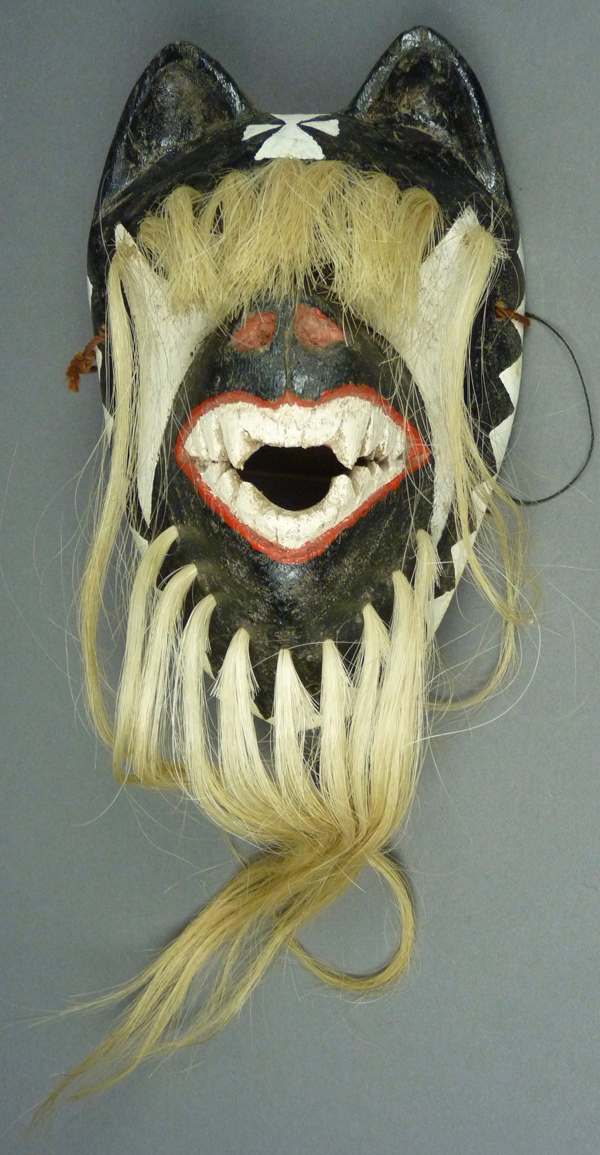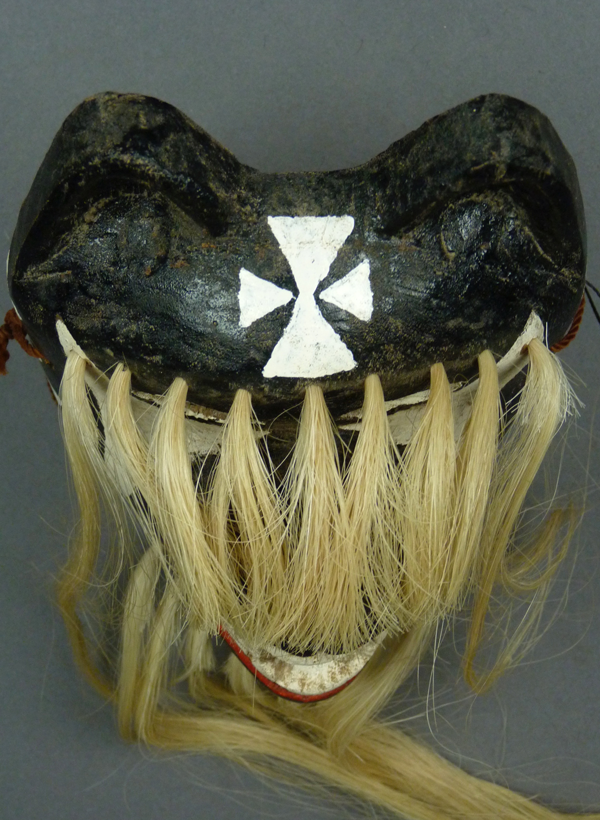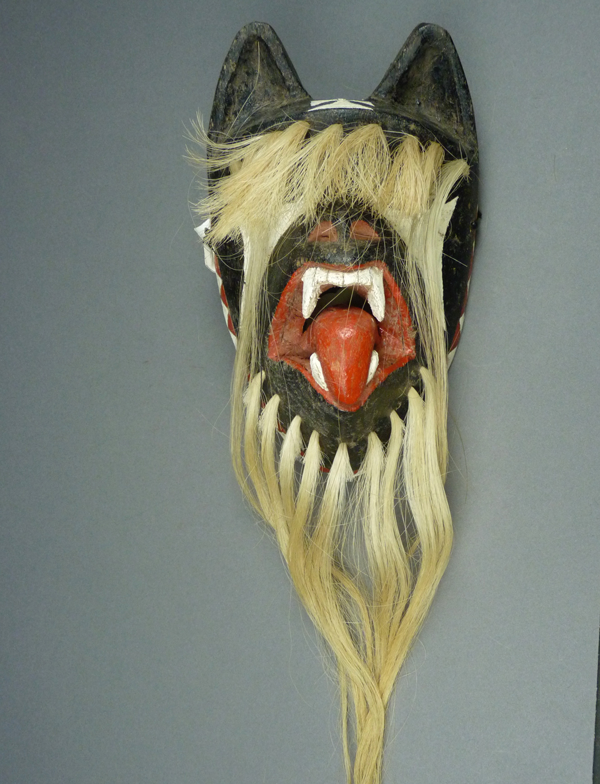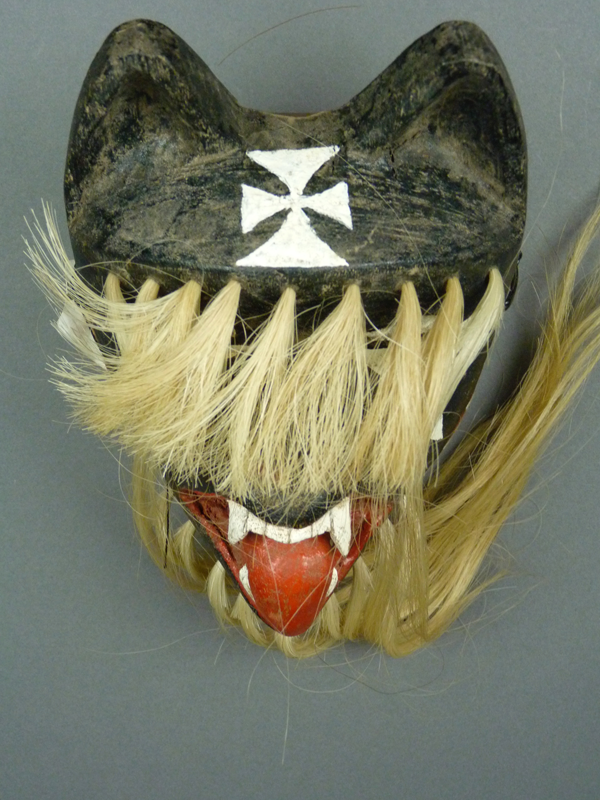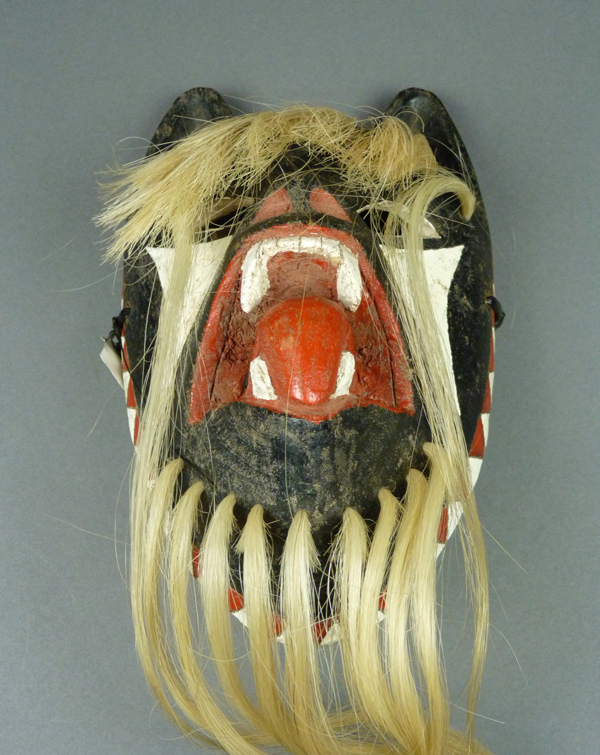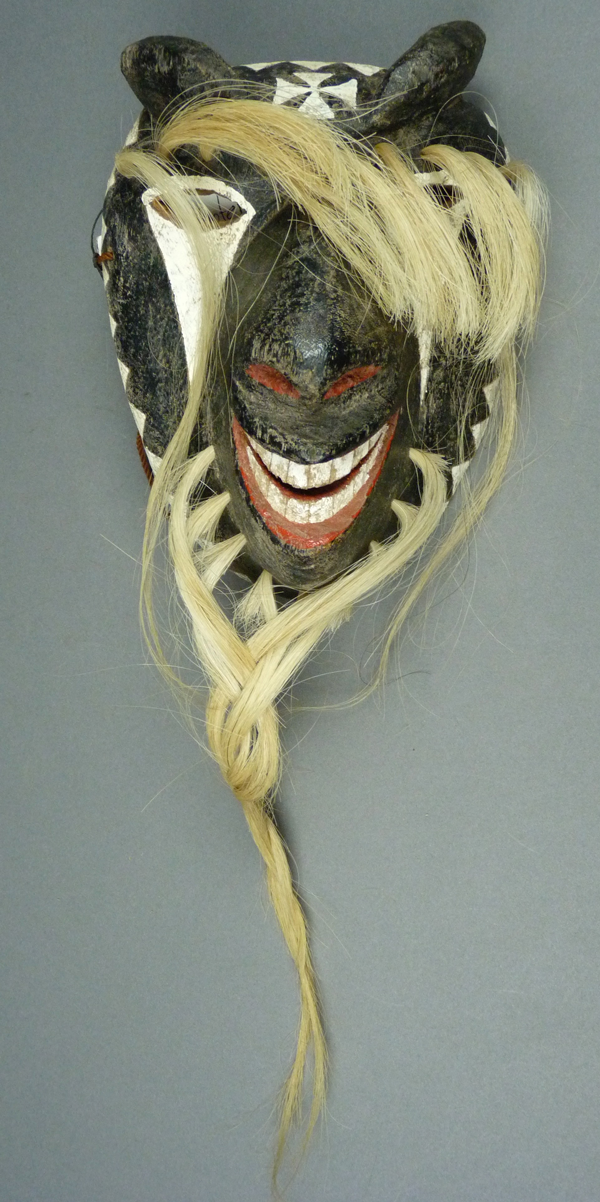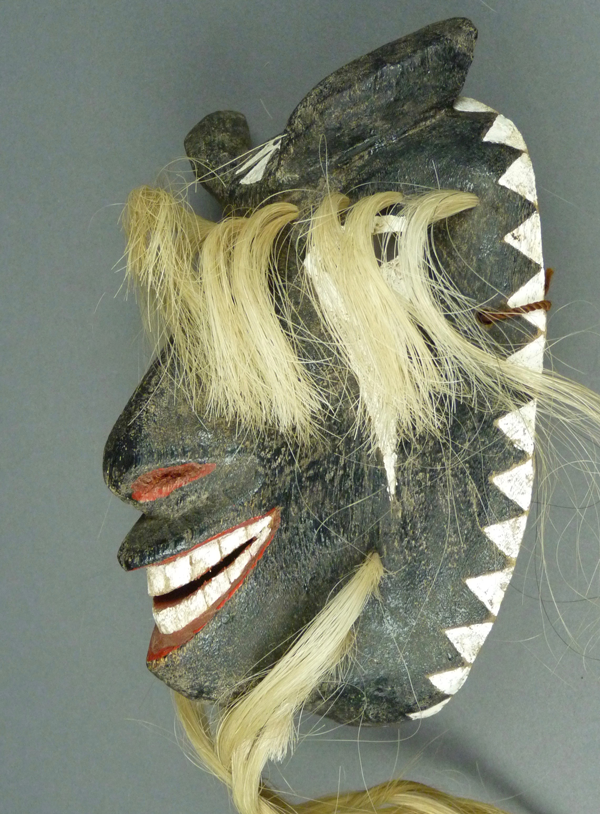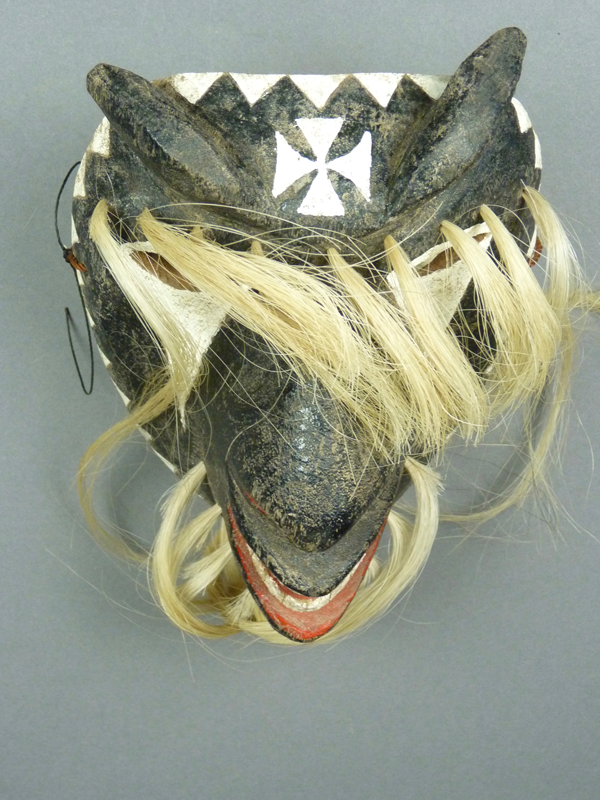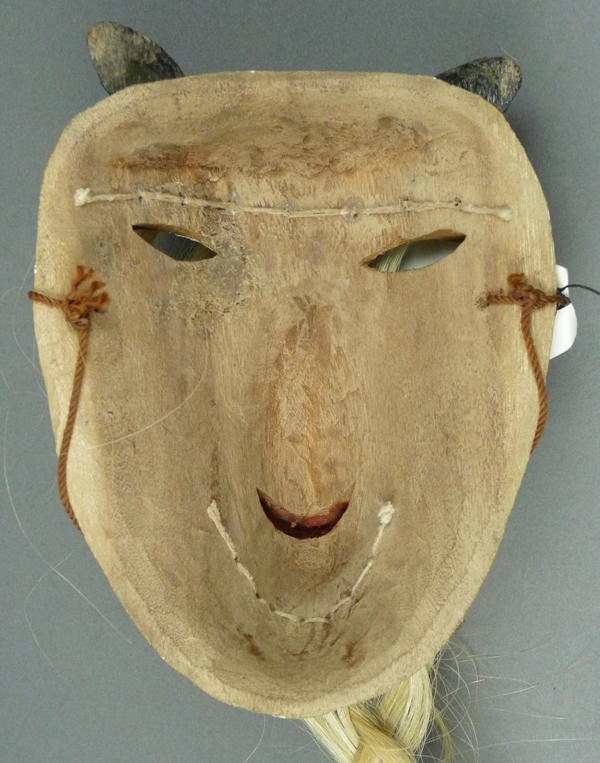Soterito Matus is another Yoeme carver whom I discovered during my photographic documentation of the Barney and Mahina Burns mask collection. Although his name appears on a number of masks, none of the labels indicate where he lives. I am guessing that he lives in Potam, Sonora. I have just one human faced mask to show you, along with a goat, four dogs, and two birds.
This human faced mask was collected by Barney Burns and Mahina Drees Burns after 7 years of use by the carver.
Note the abstract designs on the cheeks, a common marker for this carver. The rim design on this mask is interesting, with its double bands at the temples and then double peaks.
Although this cross resembles those of Alejandro Reyes Alegria, of Potam, it has a slightly different design. This will be more obvious on some of the masks that follow.
The mouth and tongue on this mask remind one of the work of many other Potam carvers.
This angle provides a particularly clear view of the designs on the cheeks.
The staining on the back indicates significant use. You will see, comparing this mask to those that follow, that his backs all look very similar to one another in shape and design.
Here is a bird faced mask with similar designs on the cheeks. This mask too was said to have been danced by the carver for 7 years. In fact, all of today’s masks were accompanied by that history, suggesting that Soterito used them in rotation.
Maybe this mask is meant to represent a chicken?
There is a tongue inside the beaked mouth. This mask has a different abstract design on the cheeks.
These bird masks lack forehead crosses.
Nor do they have chin crosses.
All of these masks seem to demonstrate the same degree of use.
Here is another mask by Sotorito with a bird face.
This one lacks a comb. The rim design on this mask reminds one of variations that I associate with the Rodríguez carvers.
Here s the cheek design on this mask.
From above one sees this Rodríguez style rim design, as well as the absence of a forehead cross.
And again, there is no chin cross.
We see this carver’s usual back. The strap was cut from a recycled inner tube.
Here is the first of four dog faced masks by Soterito from the Burns collection (B&M 195). You will see that they are very uniform in style and that they resemble canine masks by the Rodríguez carvers.
The abstract cheek designs have been replaced by long flowing triangles which resemble those of Preciliano Rodriguez Cupis.
The integrated design of the forehead with the two ears will prove to be consistent across all four of Sotrito’s canine masks.
The cross on this mask is a better example of Soterito’s cross design.
Apparently Soterito seldom includes a chin cross.
This is a danced mask.
Here is a second example of Soterito’s canine masks.
It much resembles the first.
Soterito used a consistent back design. This one has mild staining from use.
Here is a third canine mask in the same style (Barney & Mahina 207).
The details are the same.
I neglected to take a back view for this one.
And here is a fourth canine mask with essentially the same design (Barney and Mahina 215).
The forehead cross is slightly different than the others.
The backs of these four canine masks do all look the same. I found at least one more of these dogs in the Burns collection, and it too had this back design (B&M 481/474).
Last but not least, a goat faced mask with relief carved horns (B&M 201).
The design is simple but effective.
The horns are carved in relief.
As usual for this carver, there is a forehead cross but no chin cross.
Here is Soterito’s almond shaped back again, although it looks different without the canine ears at the top.
Next week I will introduce you to another Yaqui carver, Ruben Hernández, from Vicam Sonora.

